Are you a good person? If the answer to that question is yes, why do you think you are a good person? It is that your moral views are different from those of other people’? the majority of us think that what we consider as moral is a universal truth. However, moral principles vary extremely all across the globe, although significant conditions are already fixed into the brains of infants.
In this summary, Paul Bloom reveals to us how babies have the ability for moral reasoning and like fair people more than unfair people, similar to adults. Although most moral behavior is formed through customs and imitation, our fundamental emotions play an important part in moral reasoning.
The way we feel morally toward our in-group vary extremely from those we have toward strangers, and our community and religion impact our moral behavior severely.

Chapter 1 – Some kind of moral judgment appears to be inborn.
Have you ever taken a look at a baby and thought of what exactly was going through its mind? Though it might not look like a lot, there’s most likely much more going on in there than you’d assume. Nevertheless, babies already have some inborn feelings on what’s right and wrong.
Although we can’t question babies about their decisions, researchers have discovered means to make educated deductions about babies’ moral feelings.
In an experiment that was conducted, researchers reveal to nine- and 12-month-old infants pictures of a ball attempting to climb a hill with either a helpful object (a square lightly pushing the ball uphill) or an obstructing object (a triangle pushing the ball back down). Later, they revealed to them a sequence where the ball would go near either the square or the triangle. Both the nine- and 12-month-olds infants used more amount of time checking the pictures when the ball moved toward the objecting object than when it moves toward the helpful object.
According to the researchers, this showed that the children had formed expectations of how the ball would act in response to the obstructing object and hence watched more when the ball reacted differently from what they’d assumed.
During the second experiment, the researchers included eyes to the shapes, making the pictures resembling humans, which they utilized to infer that the infant was making a social judgment about the obstructing object.
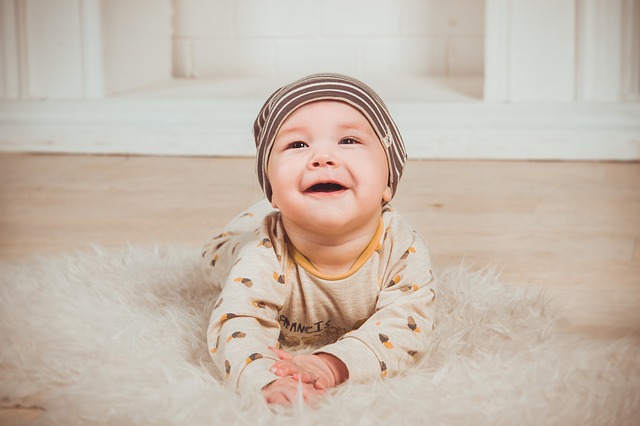
The Critics of the experiment believe it just reveals that infants formed expectations of what would occur, not which shape they morally liked.
So, the original researchers did another third experiment where they made use of three-dimensional puppets rather than animated geometric shapes. Once again, there was a ball either being assisted or obstructed by a puppet and rather than basically making use of “looking measures,” the researchers used “reaching measures” to know which puppet the children liked.
Nearly the entire the babies reached for the helpful puppet, showing their view of “good” and “bad” and, by doing that, an inborn form of moral judgment.
Chapter 2 – Babies, as well as young kids, react to the pain of other babies.
If you’ve attempted taking care of a young child and it was difficult for you to do, you might be shocked to realize that young kids have the ability to help others.
Only after a few days of being born, babies can react to the pain of others. When a baby hears that another baby is crying, the baby also begins to cry – and it’s not only a response to loud noise.
Various experiments have revealed that babies cry meaningfully less when they hear the noise of a random computer at the same sound as another child crying. Also, babies cry less when they hear a recording of themselves crying, displaying that it’s someone’s else’s pain that produces their reaction.
Also, young children attempt to pacify others –although it’s not usually effective. Carolyn Zahn-Waxler a Developmental psychologist discovered that young children who watched others behaving as if they were in pain – for instance, a mother hitting her knee – responded by pacifying them.
Researchers claim that this type of pacifying action looks to be a developed innate capability since we also view it in our primitive ancestors. As stated by Frans de Waal a primatologist, chimpanzees put their arm across another chimpanzee that’s been attacked and pat or take care of them.
Of course, children haven’t really mastered the skill of soothing each other. At times their instinctive response to someone’s else pain is to comfort themselves –since watching others in pain makes them feel unhappy.
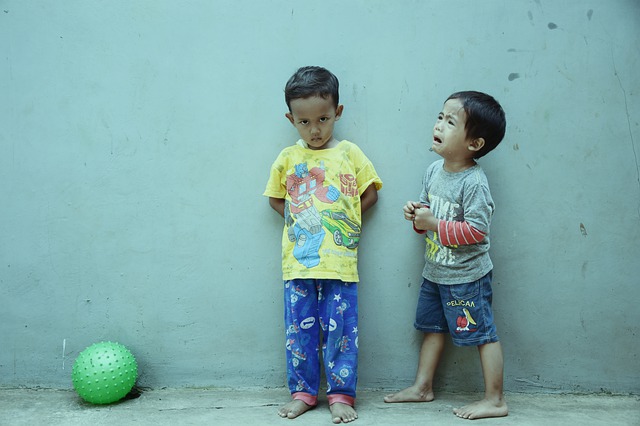
Lastly, young children attempt to be sincerely caring even when they are not being urged.
Think of the following experiment done by Felix Warneken and Michael Tomasello both psychologists: an infant is in a room with the mother; an adult comes into the room with his arms filled and attempts to open a closet door; no one checks the child or requests for instance. Regardless of that, about 50% of the children suddenly got up and opened the door for the adult, showing that even really toddlers want to assist.
Hence, we can deduce that infants, as well as young children, show some form of moral action.
Chapter 3 – Young children prefer the fair sharing of resources.
When we talk about sharing resources, like money or food, adults have a lot of cleverly planned means of calculating what a “fair” and moral share is for everybody. Also, it seems that this skill is also present in children.
Children possess equality bias. Meaning, they prefer to share the same resources to everybody, irrespective of who the person is.
Kristina Olson and Elizabeth Spelke, both psychologists gave children a puppet in an experiment. The children had to assist her to share stickers among two other puppets. For instance, in one case, the two puppets were friends with the first puppet; in the second scenario, one puppet was a friend and the other a stranger; in a third scenario, one puppet was a relative and the other a stranger.
The researchers discovered that if the three-year-olds children were provided with the same number of stickers, they nearly usually shared the same number of them among the two characters. This shows that it wasn’t important to the children if the puppet was more familiar to the person distributing the resources – they still behaved with their equality bias and shared resources among everybody equally.
The equality bias is really strong that children would prefer to throw the resources away than allocate them unfairly.
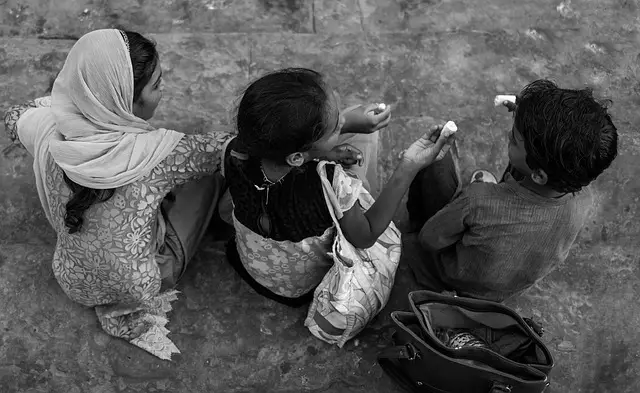
This was displayed in a different experiment where children from the ages of six and eight were told about a story of two boys who cleaned their room and could, therefore, be compensated with erasers, which the children are asked to give out. When there had an unequal number of erasers (five), children would allocate two erasers to each of the boys; however, nearly always wanted to throw away the fifth eraser.
This was the case even when the children were guaranteed that none of the boys would find out about the additional erasers, and hence the receivers couldn’t display delight or jealousy. This shows that children strongly prefer equality.
Chapter 4 – The requirement for moral judgments is compassion; however, compassion only doesn’t make us moral.
Have you ever taken a newspaper to read and shook to imagine the horrible offenses some people are capable of doing? Really, what makes these people different might be their lack of one important human characteristic: compassion, or worry for the pain of other people. If we don’t have compassion, it’s really difficult to behave morally.
Psychopaths are one category of people who usually don’t have compassion. Abigail Marsh, a Psychologist tells a story of a female psychopath whereby faces with different emotions were being shown to and she failed all the identify to identify a fearful look.
She eventually worked it out after a while and mentioned, “That’s the face people have before I stab them.” In conclusion, psychopaths possess a really different heart: unconcerned toward the pains of other people, or they lack compassion.
People that are healthy feel compassion and it’s really difficult for them to act in opposition to it.

During the 1930s, researchers did an experiment whereby people were questioned the amount of money it would require to strangle a cat with their hands only. Averagely, people’s response was $10,000, which coverts to nearly out $155,000 in nowadays currency. The exact set of people mentioned that it would just require half that amount to convince them to get one of their front teeth removed.
The conclusion? Compassion has more significance for the majority of us than our own suffering and vanity.
However, only compassion isn’t enough to make moral judgments. Experiments conducted by psychologist Daniel Batson and his associates discover that we can behave compassionately and immorally all at once.
Assuming you had with you a lengthy list of people that are awaiting a heart transplant and you could choose the next person to have the surgery. Also, assuming you’d heard the story of a specific young girl on the list and you felt a lot of compassion for her –that you’d rather have her get the heart transplant than the other people on the waiting list.
This is understandable in regards to compassion; however, it wouldn’t be moral since that wouldn’t be fair to other patients on the waiting list.
Chapter 5 – Empathy assists us to be moral; it requires more than empathy to elicit moral behavior.
Although the terms “empathy” and “compassion” are usually used interchangeably, they really don’t mean the same thing. The only time you display empathy if you really put yourself in the other person’s shoes.
The majority of us feel empathy toward other people. Visualize watching a comedian delivering a terrible performance on the stage: no one is laughing, the poor guy begins to sweat, some people are already standing up to leave the show. Are you already wiggling in your seat?
Feelings are “infectious.” If other people feel bad, we feel bad too: empathy is a strong, usually irresistible desire.

Adam Smith a Moral philosopher refers to empathy as a process whereby “we go in as it were into [someone’s else] body, and become to some extent the exact same person with him.” Author John Updike remembers when he was still a child, the memories of his ill grandmother as ideal empathy: “At the kitchen table, my grandmother would get choking convulsions, and in sympathy, my throat would feel narrow.”
These instinctive desires of empathy can really make us more kind since they let us realize the circumstances of other people and in turn assist us to comfort them.
However, as with compassion, empathy isn’t sufficient to make us moral humans.
Consider the real-life scenario explained by Jonathan Glover a philosopher, about a woman who stayed close to the death camps in Nazi Germany. The woman witnessed prisoners taking quite a long time to die after being shot and it disturbed her a lot that she had to write a letter saying, “I demand that it be fixed that such kind of cruel actions be stopped, or else it should be carried out where no one sees it.”
She had empathy enough to be stirred at these cruel things. Still, she could live with these killings happening provided she didn’t have to witness them, showing that her only empathy wasn’t enough to elicit moral behavior and make her really the cruel actions.
Chapter 6 – Parts of our moral feelings are retaliation as well as the impulse for punishment.
During a game, if a person cheats, would you attempt to punish them for cheating? Would you make use of money to punish them? An experiment reveals that the majority of the people would really do that.
Two economists did the following experiment: four people play a money game where every single person receives $20. They then play numerous rounds and people drop money in the middle at the beginning of every round. If they all drop their money $20 in the middle ($80), it becomes doubled ($160) and split four ways and everyone gets $40 back.
However, if you hold back your money while every other person drops their money in ($60), it becomes doubled ($120) and split four ways. Other people now each get $30 and you now have $50. Additionally, a person playing the game can spend their own money so they could remove money from someone else.
80% of people that played the game used their money to punish the participant that played “unfairly” –meaning., those that didn’t put in their money–although the money they used to punish another participant wouldn’t directly assist them or the other participants. This reveals that people have a really strong inclination for punishing unfair action that they’d reduce their own money to punish the people that are acting unfairly.
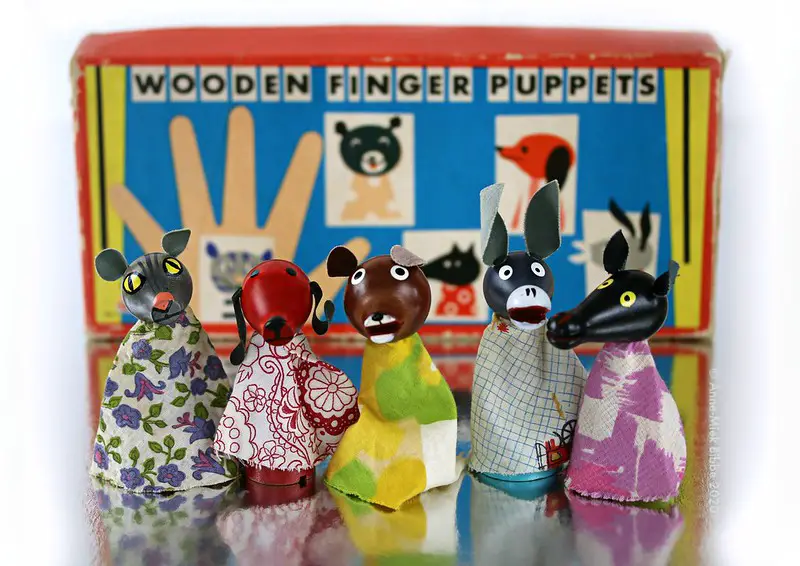
Also, really young children display the impulse to punish other children as part of their moral feeling. In a study that was conducted with 21-month-old babies, they notice that a puppet is finding it difficult to open a box, another puppet that comes to assist it to open the lid and a third puppet that approaches and jumps on the box, closing the box. Later, the children were questioned on puppet should get a treat and which puppet should get punished by taking away a treat.
As expected, the treat was given to the helpful puppet by the toddlers and, when told to remove a treat, they said they would take it from the “bad” one.
Since children already have this impulse to punish at a really tender age, we can assume that this is a significant part of our moral social feelings as humans.
Chapter 7 – Our moral judgments are made stricter with disgust and more concentration on purity.
Visualize watching people squatting on the train or in the center of the tracks to urinate. Would you feel disgusted by that?
This was precisely what SS escorts did to the Jewish prisoners by not giving them access to toilets on trains. Due to that, German passengers publicly showed their disgust at the Jewish prisoners, even going far to mention that they deserved their doom since they were ordinary animals.
Disgust can be a strong drive behind wickedness since it has an effect on our kindness and usual moral judgments and makes us wicked.
In a research that was conducted by Thalia Whatley and Jonathan Haidt, participants were hypnotized to feel a flash of disgust anything they viewed an arbitrary term. After, when the participants later read stories of mild moral wrongdoing, the participants who had viewed that certain term judged the wrongdoings more severely than those who hadn’t viewed it. So, showing that disgust made their moral judgments stricter.
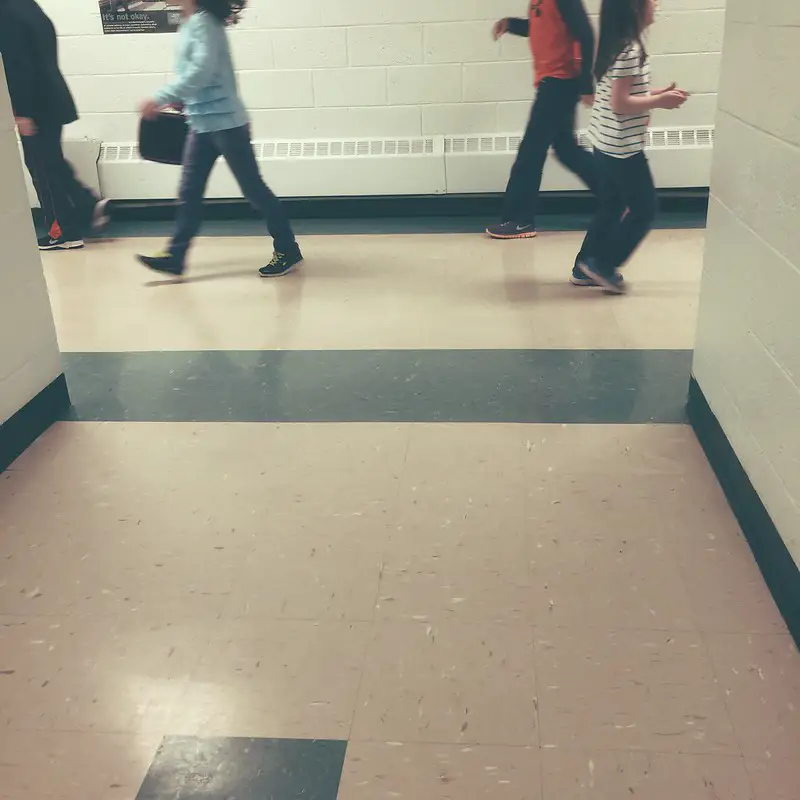
Similarly, more concentration on purity has a tendency to impact our moral judgment. In an experiment that was conducted by psychologists Erik Helzer and David Pizarro, they psychologists questioned students in a public hallway about their political views. Students that were questioned while standing close to a hand sanitizer dispenser had a tendency to mention that they were mostly more conservative and more disapproving of behaviors that could be viewed as “sexually impure” than students who weren’t next to the dispenser.
Then, Helzer and Pizarro deduced that a more concentration on purity has an impact on people’s judgment of other peoples’ behaviors by making their moral judgments stricter. This might be as a result of the association between physical and spiritual cleanliness. If you notice a cleanliness sign, you might be reminded of purity (both physical purity and purity of thought) and hence behave really stricter towards wrongdoings of this purity.
Chapter 8 – We like our relatives for good, unifying and evolutionary causes.
Assuming you’re a parent or are friends with people that are parents, you understand just how much parents sacrifice for their kids. They eat, clothe and cater to them, they forfeit sleep for their children, they have to deal with their crying and yelling– and the majority of the parents would say without feeling reluctant that they’d die for their kids.
However, can you do the exact thing for someone you don’t know?
It’s evolutionarily reasonable that humans prefer their relatives over other people. Imagine our forefathers, who stayed in small, hunter-gatherer communities in Savanna-like environments. According to them, acting selflessly and morally toward their relative entailed assisting them – and indirectly their own genes – to endure and hence increase their own evolutionary likelihoods.
For the author, provided that family members have the same genes as each other, “kindness to kin is, in a really actual way, kindness to oneself.”
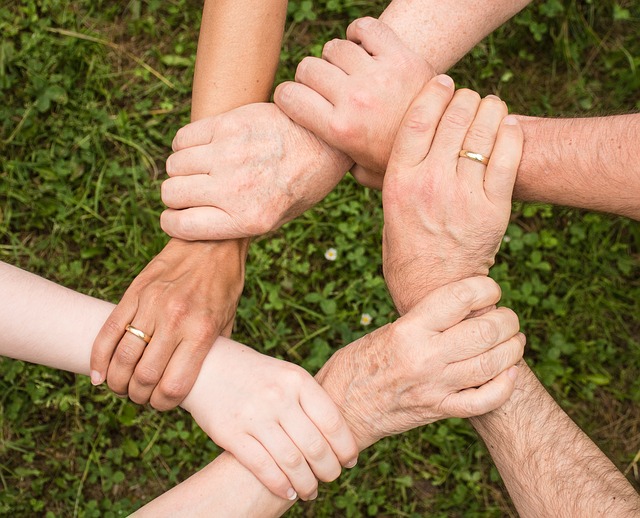
It’s usual to notice emotional connections between relatives from a moral view. Think of how you’d critic parents that were acting uncaringly toward their kid, for instance, treating the child as a stranger. If you’re similar to the majority of the people, you’d view the parents as being immoral.
Even the plain symbol of kinship is really strong in uniting people. A lot of groups that wish to grow their social connections define themselves as a relative, a sisterhood or a brotherhood. Also, a lot of communities possess “fictive kin,” meaning, people who are not related are viewed as blood relatives.
Writer Rachel Aviv writes on the lives of gay teenagers who are homeless on the streets of New York who develop elaborate fictive kin. They have characters such as mother and father and express their readiness to be mentors to one another. Ryan was one of those boys and he mentioned this about the fictional kinship, “Many of us don’t have biological families; therefore, the gay family occupies the emptiness.”
Chapter 9 – We like people in our in-group more than others, which in extreme situations can result in racism.
Even in this present world, segregation and racism are huge issues. The reason might be the feeling of being part of an in-group is really significant that we can effortlessly be provoked to fight for it.
Think of the 1954 experiment conducted by Sherif and Tajfel’s where they wished to know the bare minimum it requires to separate people.
They called in 22 fifth grader students from white, middle-class families to a summer camp and separated the boys into two different categories that weren’t aware of each other’s being.
In the first week, group unity was nurtured through the playing of games, and later, the researchers brought the groups together and organized tournaments among them. Each of the groups strengthened dissimilarities from the other group by creating their own flags, robbing and damaging things from the other group, and making use of racial labels although all of there were white.

In a nutshell, their relationship changed from animosity to complete enmity. This experiment is well-known for revealing how it is very easy opposing societies can be formed and how significant it is for us to feel as if we are part of an in-group.
Toddlers as well already have a bias towards the acquainted. If you take images of various ethnicities and show it to toddlers, they watch longer the images of the people who are the same to the people who are taking care them, showing that they like them more. This indicates that babies like what they’re conversant with even before they understand if they’re “white” or “black” themselves.
However, this doesn’t entail that toddlers are born racists. These dissimilarities just become pertinent if they’re being emulated by the social surrounding.
For instance, if children attend schools that are racially mixed; generally, they have a tendency to develop less racist behaviors since the race doesn’t show a huge difference. But, say in the school cafeteria all of the white children sit alone at one table and at another table all the black children sit there, race can turn into a relevant factor. That is only when is there a risk of children learning to become a racist.
Chapter 10 – Society has a great impact on its customs on what we consider moral or just.
Do you believe it’s normal for a husband to rape his wife? Or do you believe it okay for parents to beat their children? Nowadays, while we might unhesitatingly say that those things are not morally right, only 100 years ago the majority of the people viewed them as okay and lawful actions.
Therefore, what has changed since that time? The customs of our society, which extremely influence our moral action.
For instance, the custom of tipping is completely selfless in the sense that you don’t anticipate to be paid back for this act of kindness, particularly if you’re tipping in a place where you don’t stay. Still, it’s viewed OK to tip for good service. In some nations, for instance, it’s even normal to tip if the service wasn’t really good
Still, for the majority of the people, tipping isn’t an act of kindness; however, something spontaneous: we calculate the tip and leave since it’s what’s expected of us, meaning, it’s the norm.
Reasonably, then, different customs form various feelings about morality.
An ancient Greek historian named Herodotus describes how the Greeks, who burned their dead fathers’ bodies, were brought together with Indians, who ate the dead bodies of their fathers. Each group was terrified by the behaviors of the other group since they believed that their custom was the only standard technique to handle the dead. None of the group had ever considered handling the deceased with any other technique!
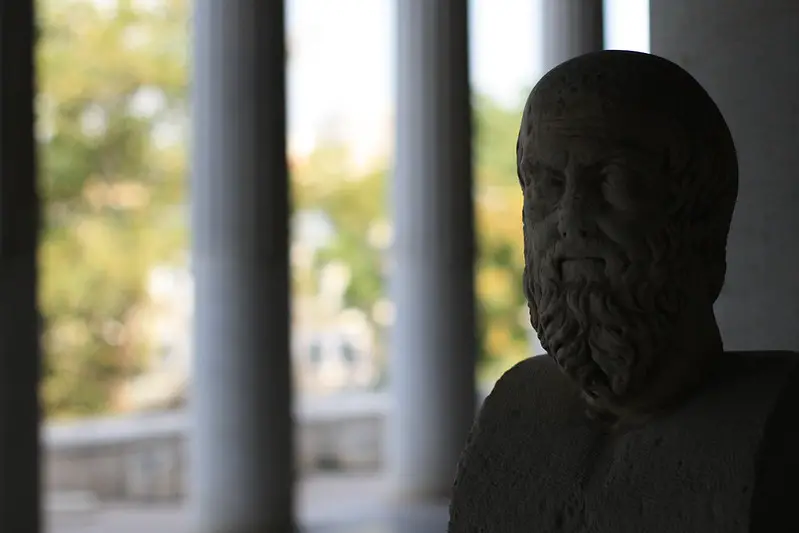
Herodotus makes custom “king of all,” claiming that this illustration shows how “one can view what custom can do.”
The reason is that customs doesn’t only impact our action; however, spread themselves via imitation, transferred from adults to children.
The author refers to an experiment where children played a bowling game where they could gain tokens in which they could then exchange for rewards. They observed an adult play the game before the children played the game and they saw the adult donate part of his tokens into a charity jar. The children donated more, the more the adult donated.
Chapter 11 – Our religious belief doesn’t essentially make us more moral.
A lot of people, particularly in the United States, don’t believe that it’s likely to be a good and moral person without trusting in God. Other people, such as Christopher Hitchens, believe that religion is “intolerant, irrational, violent, related to racism and tribalism and bigotry.”
But, as a matter of fact, it’s attending church, not religiosity itself, that’s connected to moral behavior. What is the dissimilarity? The social part: people that are a part of a religious community have a tendency to donate more money and more time to charity.
Meaning, it’s possible not to have faith in a God; however, also be active in a religious community and show more moral deeds through charity than a person who is extremely religious who uses his entire day praying by him- or herself.
However, religious attendance can have moral disadvantages as well.
Jeremy Ginges a Psychologist discovered a strong association among Palestinian Muslims between religiousness and support for suicide bombing. Once again, the important reason here was a religious society and not religious beliefs.

Furthermore, among groups such as Indonesian Indian Hindus, British Protestants, Russian Orthodox, Muslims, Mexican Catholics, and Israeli Jews the rate of religious attendance (however not of prayer!) is connected to replies like, “People of other religions are to be blamed for a lot of the issues in this universe.”
This entails that the more often people go for religious services, the more likely it is for them to be unfriendly and judgemental in their views toward other religions.
Lastly, religious belief doesn’t lead to moral belief: it only imitates it.
Robert Wright the author of the book titled The Evolution of God, mentions in the book that the majority of the people who follow to monotheistic religions become less accepting of people that practice other religions when confronted with external risk, for instance, a war. In these circumstances, they feel as though, they don’t have to act morally towards strangers and have a tendency to defend their bad moral act through their belief.
However, assuming there are no riks, the moral circle grows and they’re likely to discover the knowledge and accepting aspects of their beliefs. So people’s meaning of their religious conviction alters if the circumstances of the society alter.
Just Babies: The Origins of Good and Evil by Paul Bloom Book Review
Although many of our moral actions are learned from a tender age, babies already have inborn characters that are important to moral growth. Also, even though we’re fixed for specific moral judgments, what’s seen as moral and what isn’t seen as moral varies all across the globe and alters with time.
Expand your perceptions.
When next you unhesitatingly obey a cultural custom, rather than thinking, “That’s only the means we do things,” dare yourself to think, “That’s only what our tribe happens to do at the moment.” By challenging yourself, that will make you become more open toward other communities’ morals and encourages an understanding among cultures.
Download Pdf
https://goodbooksummary.s3.us-east-2.amazonaws.com/Just+Babies+by+Paul+Bloom+Book+Summary.pdf
Download Epub
https://goodbooksummary.s3.us-east-2.amazonaws.com/Just+Babies+by+Paul+Bloom+Book+Summary.epub
